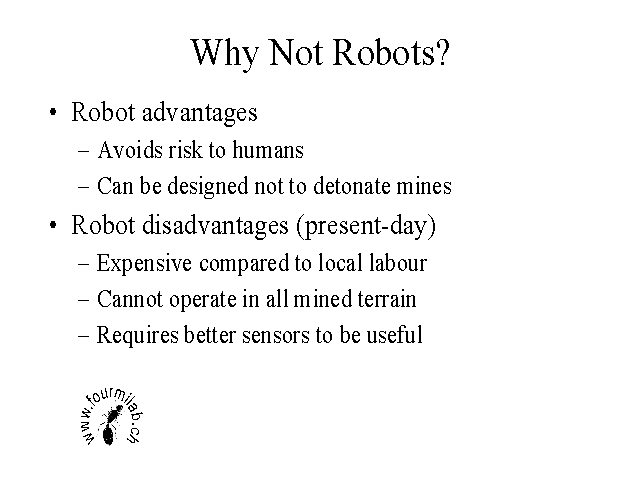

|
|
|
When technologists consider the mine problem, they often immediately start thinking of robotic solutions. I did, because it seemed to me that minefields around the world were a better place to test and rapidly evolve mobile robot technology than volcanoes in Antarctica or the surface of Mars. You can reach your local minefield with a launch vehicle no more sophisticated than a train ticket, and the humanitarian payoff from a successful clearance robot would be much more immediate.
I believe, and many mine clearance operators agree, that robots will eventually play a role in demining, but that the focus in the near term should be on sensors and related aspects of the problem. The reality is that no existing robot can operate in the wide variety of mined terrain—deserts, jungles, submerged in rice paddies—as human operators, and the cost of even limited-application robots is beyond what demining projects can afford, compared to the typical salaries of human deminers. Progress in robotics can change this situation, but the gap remains wide.
Progress in sensors not only makes robots more feasible, it immediately increases the productivity of human demining teams.
The minefield, real or simulated, poses a real-world challenge to designers of all-terrain, semi-autonomous or autonomous robots, and may help to drive robot technology even if near-term applications are unlikely.